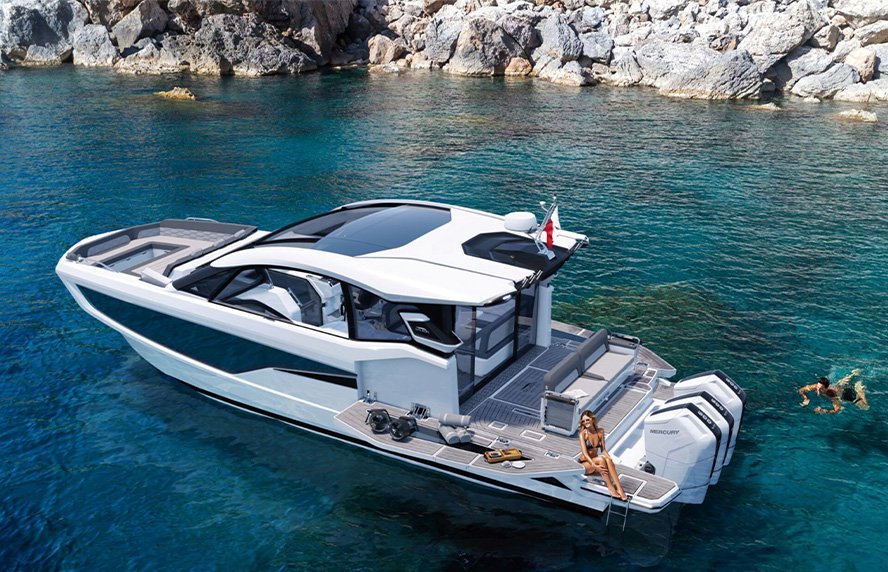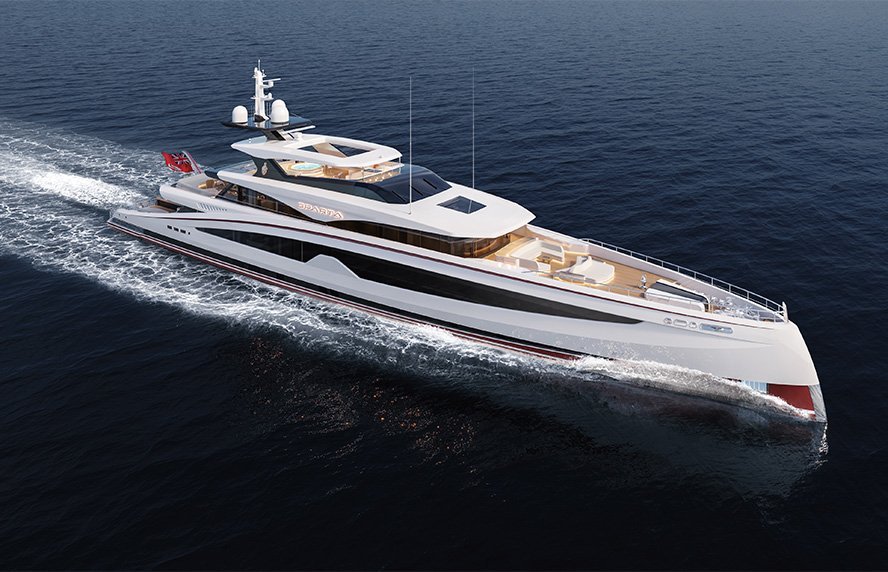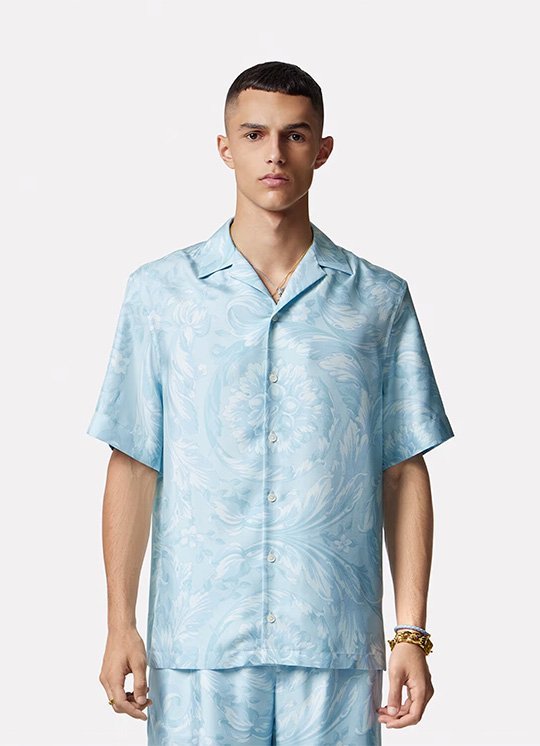
She’s a German architect, but fashion had always tempted her, a fascination fed by the fast pace of realising ideas in fashion. As a result she took a course in fashion design, after which she worked for some years as a freelancer, while at the same time producing her own designs. The idea to create a brand using those designs came to light in 2014, when she presented her first collection. Strongly influenced by the Bauhaus movement, Jennifer designs fashion – elegant, sustainable and timeless – like someone designing houses.
You are an architect. When did your interest in the fashion world first come about?
I discovered my taste for fashion during my architecture studies. I like the pace of an idea’s realisation in fashion, as well as being able to realise my ideas and my vision independently from other people, while relying just on my own means.
Do you have any specific training in fashion design?
Yes, I do. Shortly before I finished my architecture studies at Dresden Technical University I had applied to study fashion at the Burg Giebichenstein University for Arts and Design. I had the privilege of studying Fashion Design for five more years at an Art University.
How does the Bauhaus movement influence your creations?
The Bauhaus movement has been deeply ingrained in the design curricula at both universities I had the pleasure to study at. So, I guess, Bauhaus is part of my design DNA, and I can’t do anything about it, other than designing inspired by the Bauhaus principles. But not in the way that I try to copy them. I would rather like to modernise the Bauhaus language in fashion. So, I call my approach playful minimalism to stress that it is about newness and playfulness rather than strict accuracy and maximal reduction. Though, I rather share the Bauhaus quest for universal and timeless aesthetic forms, which is really a paradoxical challenge in fashion, because this would mean the idea of eternal classics in a business that is based on change and trends.
"I DESIGN FASHION IN THE WAY ARCHITECTURE DESIGNS HOUSES”
Is sustainability important to the brand?
It is essential. People should buy clothes less often, but more consciously. In our view, sustainability starts with the quest for timeless design. When the clothes stay aesthetically relevant for the wearer for a long time, you can also add quality of manufacturing and fabrics. Hence, craftsmanship is very important for us, too. We only source fabrics made from natural fibres that are produced in the EU according to strict EU environmental protection laws, and we only work with manufacturers from the Berlin region, which we personally know in order to make sure that working conditions are ok.
How would you define the woman and the man who wear BRACHMANN?
I design for women like myself, who are independent, who like who they are, who are ethically conscious, and who share my aesthetic vision of Bauhaus style playful minimalism.The BRACHMANN man is refined, bold, and independent in his aesthetic judgement; he likes surprises and respects emancipated women.
Are architectural projects still part of your life?
Not in the strictest sense. Though, I think I design fashion in the way architecture designs houses. When architects design houses as a human’s third skin in relation to a static environment, then I design fashion as a human’s second skin for dynamic movement in a fuzzy environment.
Where would you like to be ten years from now and what are your aspirations for the BRACHMANN brand?
In ten years time, I will have the privilege of realising my aesthetic vision by designing new beautiful collections season after season. The label will have grown in a healthy way into a sustainable size; it is visible and respected for its style and values with a loyal international community of happy fans.
You are an architect. When did your interest in the fashion world first come about?
I discovered my taste for fashion during my architecture studies. I like the pace of an idea’s realisation in fashion, as well as being able to realise my ideas and my vision independently from other people, while relying just on my own means.
Do you have any specific training in fashion design?
Yes, I do. Shortly before I finished my architecture studies at Dresden Technical University I had applied to study fashion at the Burg Giebichenstein University for Arts and Design. I had the privilege of studying Fashion Design for five more years at an Art University.
How does the Bauhaus movement influence your creations?
The Bauhaus movement has been deeply ingrained in the design curricula at both universities I had the pleasure to study at. So, I guess, Bauhaus is part of my design DNA, and I can’t do anything about it, other than designing inspired by the Bauhaus principles. But not in the way that I try to copy them. I would rather like to modernise the Bauhaus language in fashion. So, I call my approach playful minimalism to stress that it is about newness and playfulness rather than strict accuracy and maximal reduction. Though, I rather share the Bauhaus quest for universal and timeless aesthetic forms, which is really a paradoxical challenge in fashion, because this would mean the idea of eternal classics in a business that is based on change and trends.
"I DESIGN FASHION IN THE WAY ARCHITECTURE DESIGNS HOUSES”
Is sustainability important to the brand?
It is essential. People should buy clothes less often, but more consciously. In our view, sustainability starts with the quest for timeless design. When the clothes stay aesthetically relevant for the wearer for a long time, you can also add quality of manufacturing and fabrics. Hence, craftsmanship is very important for us, too. We only source fabrics made from natural fibres that are produced in the EU according to strict EU environmental protection laws, and we only work with manufacturers from the Berlin region, which we personally know in order to make sure that working conditions are ok.
How would you define the woman and the man who wear BRACHMANN?
I design for women like myself, who are independent, who like who they are, who are ethically conscious, and who share my aesthetic vision of Bauhaus style playful minimalism.The BRACHMANN man is refined, bold, and independent in his aesthetic judgement; he likes surprises and respects emancipated women.
Are architectural projects still part of your life?
Not in the strictest sense. Though, I think I design fashion in the way architecture designs houses. When architects design houses as a human’s third skin in relation to a static environment, then I design fashion as a human’s second skin for dynamic movement in a fuzzy environment.
Where would you like to be ten years from now and what are your aspirations for the BRACHMANN brand?
In ten years time, I will have the privilege of realising my aesthetic vision by designing new beautiful collections season after season. The label will have grown in a healthy way into a sustainable size; it is visible and respected for its style and values with a loyal international community of happy fans.










